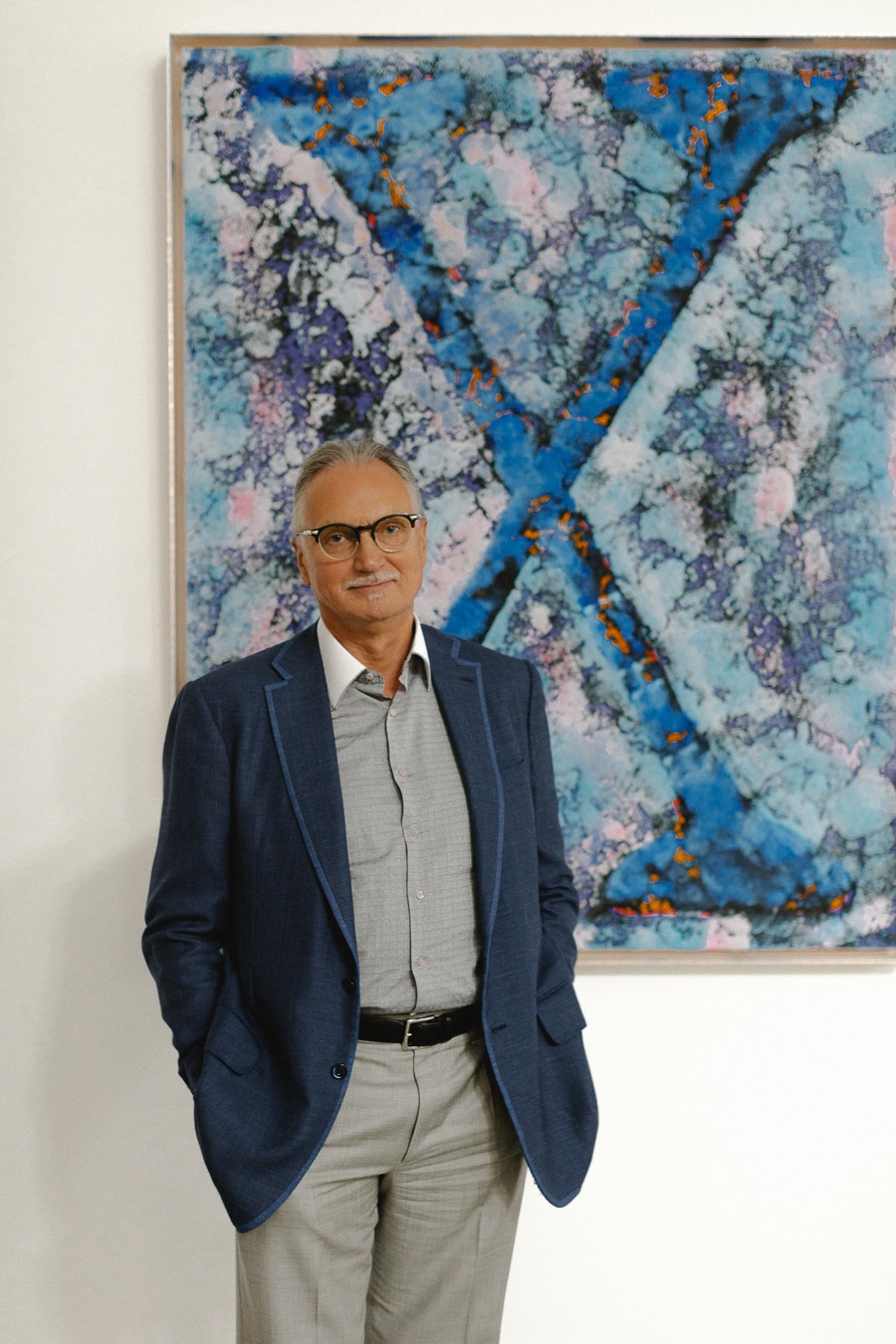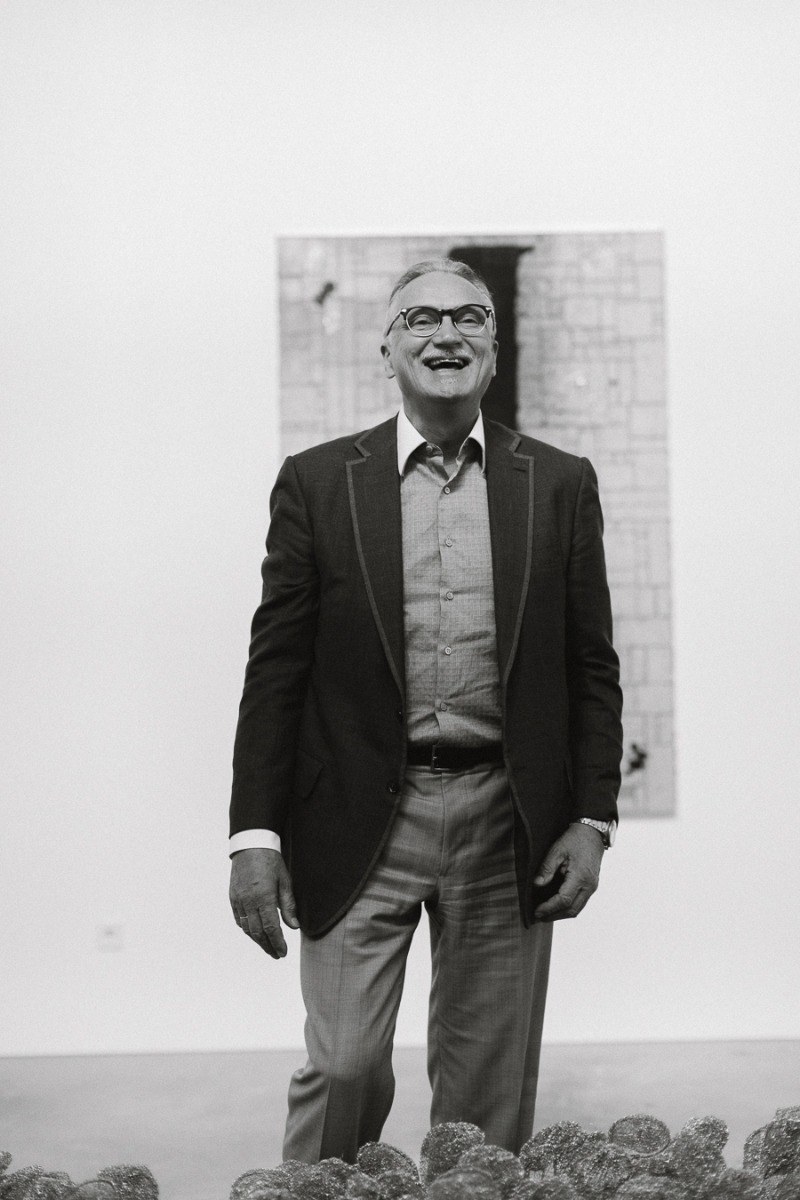
The Zuzeum – a place for creativity
An interview with art collector and art patron Jānis Zuzāns
Yesterday a new cultural institution – the Zuzeum art centre – opened in what was once a cork factory on the edge of Riga city centre, on Lācplēša iela. This is undoubtedly a significant event in a city where for years there has been talk of an acute lack of space for art. The Zuzeum is not only an extension of Riga’s art platform, but also the first private large-format structure with ambitious goals and visions to become a reference point on both local and international levels. The people behind the idea and the force behind its implementation are Jānis and Dina Zuzāns, passionate art collectors and art patrons who have been the greatest supporters and active participants in the Latvian art process in the last ten years.
Arterritory.com met with Jānis Zuzāns to not only hear about his plans for the Zuzeum art centre, but also to discuss the lessons and reflections that have come about due to the global pandemic.
If one assumes that every crisis, like every disease, is, in a sense, a lesson, what have you learned about yourself and about global processes?
This is a good time to re-evaluate your projects, yourself, your place, and your opportunities in this society, and to reprioritise where necessary. I have realized that, for example, the size of the Zuzeum art centre as it was originally intended can be postponed for a while. As a result of regulatory decisions, my business scope has been limited and I can no longer afford to invest in art as much as I once did. Consequently, we have also reviewed the project of the art centre and have decided to reduce its size – perhaps temporarily, perhaps permanently. I cannot be more specific at the moment. In my opinion, its current size is appropriate for both Riga and the current situation.
A pandemic makes one look at things very rationally. Priorities need to be understood, and it is clear that the central priority is overall health. The epidemiological situation is serious and cannot be ignored. Latvians have scattered; we all have our own residences outside of Riga, which gives us the opportunity to spread out. However, it must be remembered that people have a certain level of tolerance up to which they agree with what the authorities are saying and forcing them to do. And in an instant, they can start to ignore the rules and oppose the authorities. When everything was immediately locked down in March, the public, as well as I, understood the seriousness of the situation; I also understood that it was going to be very bad for business. As a result of our quick reaction, the Covid wave did not hit us so hard, and we seem to be one of the countries in Europe that has easily gotten through it, at least for the time being.
Dina and Jānis Zuzāni. Photo: Vika Anisko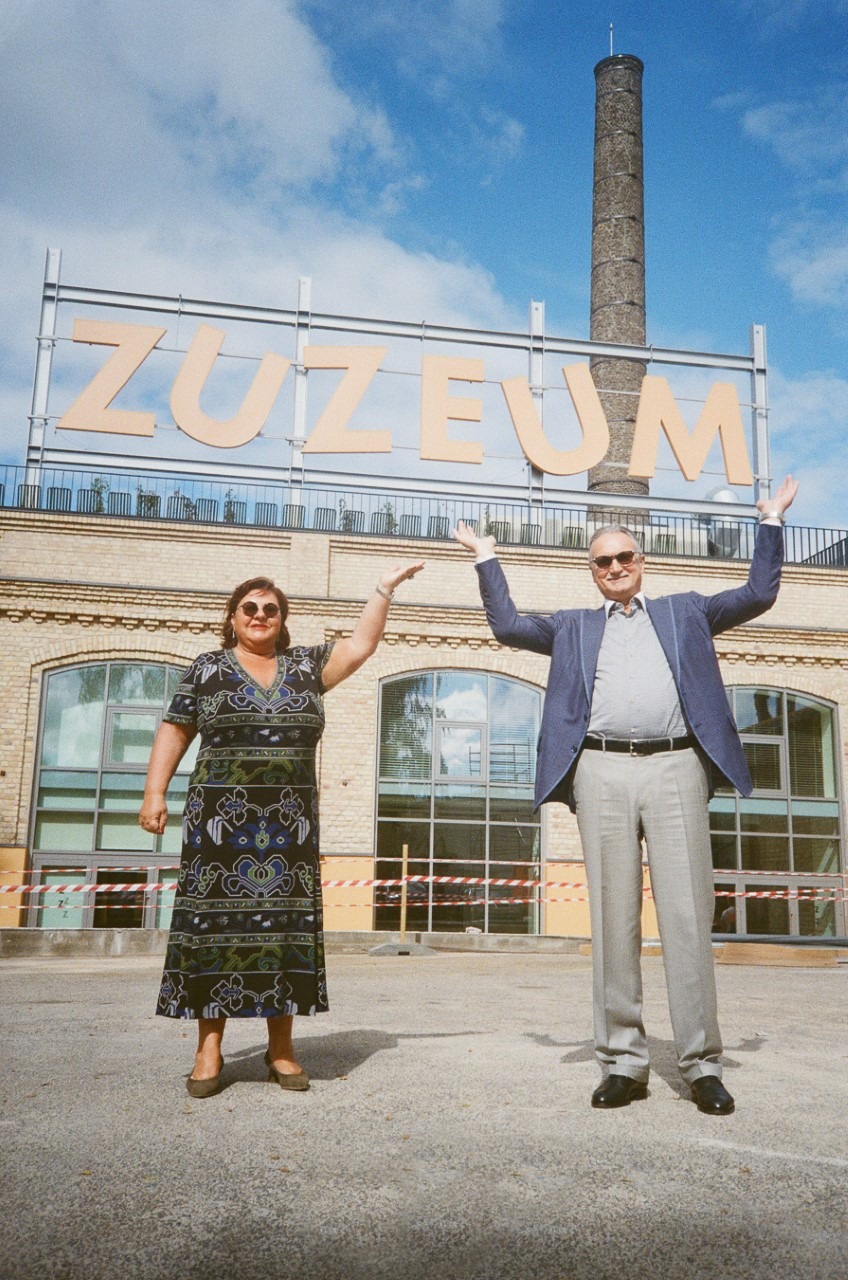
In a private conversation you once said that you have gotten over your delusions of grandeur.
Yes. There was a time when I was surfing the wave – everything was going great and the Zuzeum building project was created in cooperation with renowned Latvian architect Zaiga Gaile. At that time I had the feeling that I could do everything; plus, I saw what sort of things others were doing around the world. And you like what they’re doing and realize that you want to do something like that too. But then at some point everything changed – the business started to lose stability, and even before the pandemic came around, things had changed. The design phase for the project was complete, but we realized that it would be difficult to implement. The pandemic put a big, fat hold on everything. I understood: ‘this is not something you can accomplish at the moment, Jānis’. Since Zaiga did not agree with my proposal to make a ‘lighter’ version and did not want to change the project, we invited the architectural firm Annvil and Anna Butele. We worked well together, and I think the result is good. It will be a beautiful place! The original project has become a monument to my grandiose dreams. There are things that can be realized and there are things that cannot. Dina and I have seemingly gotten over it and realize that we are neither the Rubells nor the Rockefellers. We have our own opportunities.
Photo: Norbert Tukaj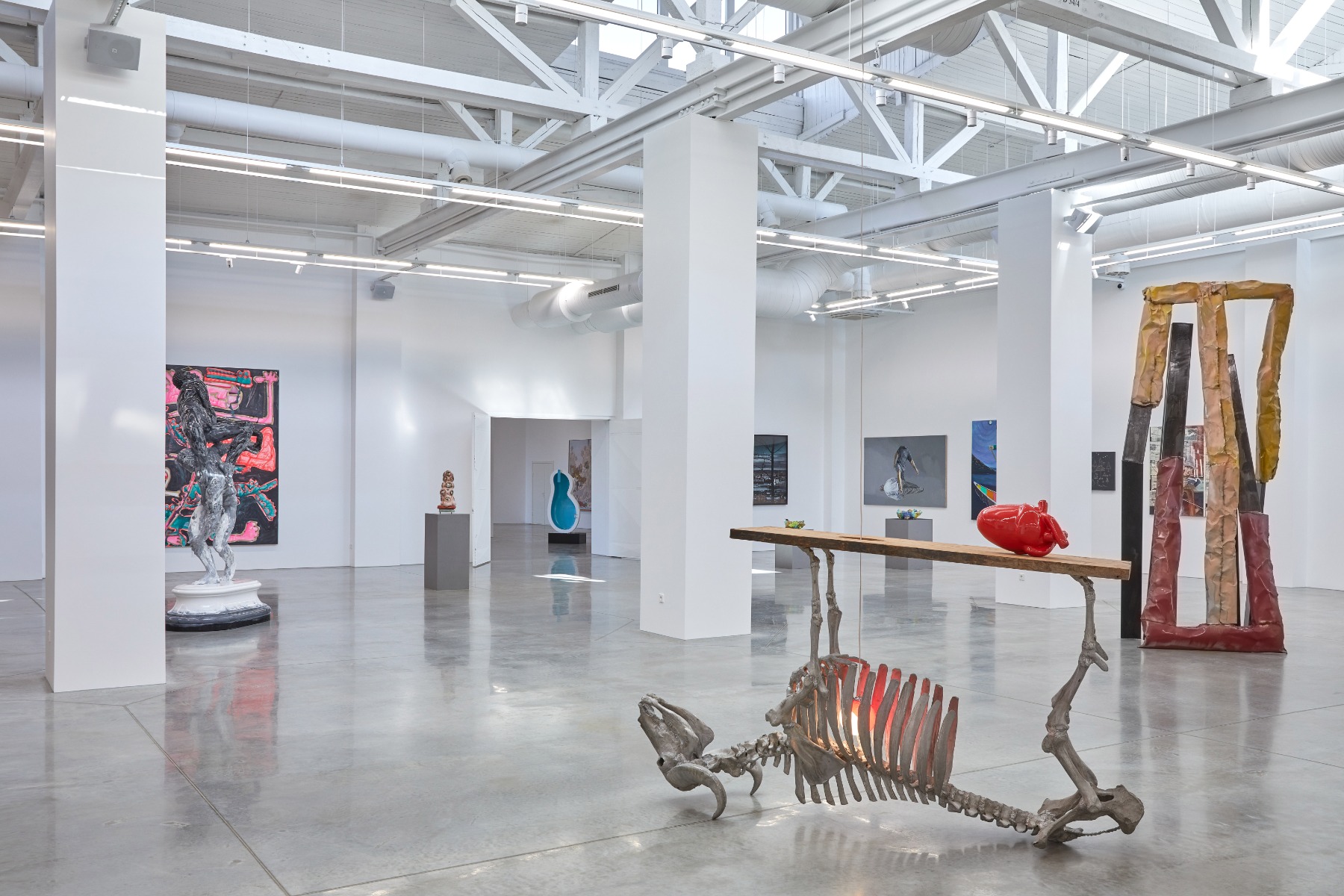
There was another factor as well. We had a long and good conversation with my daughter Elīna, who is currently studying ‘existential things’. We spoke about what will happen to all this after we are no longer here. You can't leave your children a project that they don’t really want nor are able to run. This particular size is doable. In my view, it can pay for itself. A small injection may be needed at some time, but that can always be adjusted for.
Apropos of existentialism, have you thought about what you will leave behind you and what is the point of it all?
I won’t be able to explain it in such detail. I am not all that knowledgeable about these things. It is important to me that our children are not burdened with something that they will not be able to cope with. But the Zuzeum art centre is compact enough. If I will want to step away from it at some point, it will be able to go on by itself very well. And once we are gone, it will not be difficult for the children to maintain it.
Photo: Norbert Tukaj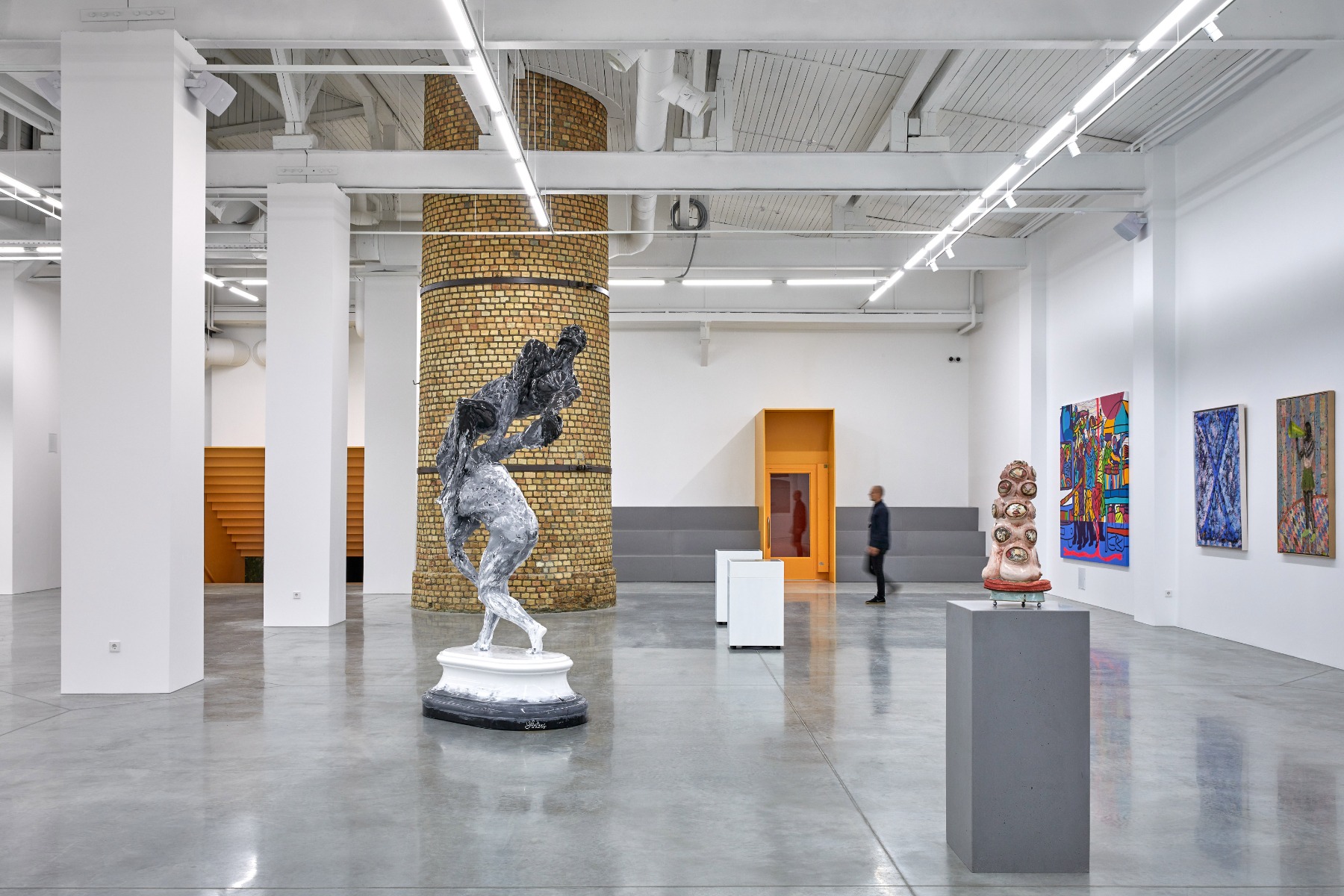
I believe that the Zuzeum will be a very high-quality contribution to Riga’s cultural scene. I hope that it will also become a networking point that will spark active dialogue on an international level. We have purchased a pretty good collection of works by foreign artists, which makes for a great ‘alphabet’ of art that is also recognised by the international audience. It is important to show them what they know in order to attract attention to Latvian art as well. This is my future goal – to create another dimension for Riga with the help of internationally known art. So that people come here not only to see RIBOCA (Riga Biennial – Ed.) or an individual exhibition at Kim? Contemporary Art Center – indeed, to purposefully integrate the city into the European art process through the Zuzeum.
I believe that the Zuzeum will be a very high-quality contribution to Riga’s cultural scene. I hope that it will also become a networking point that will spark active dialogue on an international level.
What do you think is the greatest value of art?
In my view, the essential value of art is that it is life in the world of allegories and metaphors. I don't need to talk to anyone anymore – I can talk to any of my works of art. And there are works of art that are no longer interesting to talk to. But there are some that are always, and will always be, interesting because they contain an infinite number of cultural-historical and aesthetic references.
In my view, the essential value of art is that it is life in the world of allegories and metaphors.
What will be at the focus of the Zuzeum art centre? What is both your and Dina’s great goal? There are thousands of museums in the world, after all...
It may sound banal, but our goal is to create another space for people who love creativity and art, and who value being in such an environment. You should always start with yourself – if you like something, then others might like it too. It will be a multifunctional centre with an art section, a café, a shop, and a small conference room. How could the Zuzeum become interesting in an international context...? It seems to me that art centres around the world want to make friends – you could draw a parallel with Facebook, where people form their own circles. I don't think we will be very different from others. We will simply offer, in my opinion, a quality product which we are deliberately creating with an international orientation. We’ve hired people of different nationalities – the team will consist of two Indians, as well as a professional from the Netherlands who will work with children. We’re doing this very consciously – we’re trying to expand our audience in this way as well. As a private institution, we have a relatively simpler life – we are not chasing after a profit and mega-levels of attendance, although financial performance is important; this will be a place where you’ll have to buy a ticket to see an exhibition.
The first exhibition is dedicated to our collection and has an international context, as we have been actively supplementing our collection with international art works for about five years now. The title of the exhibition, We Aim to Live, is conceptual and rational at the same time, and will feature works by both foreign and Latvian artists, with all works created no later than the year 2000. Our enterprise is based on the wish to show art of the 21st century. And it is important that the local audience, which is currently travelling much less than usual, has the opportunity to see examples of international art, including more recent ones, for example, works created as recently as 2019.
Jānis Zuzāns. Photo: Vika Anisko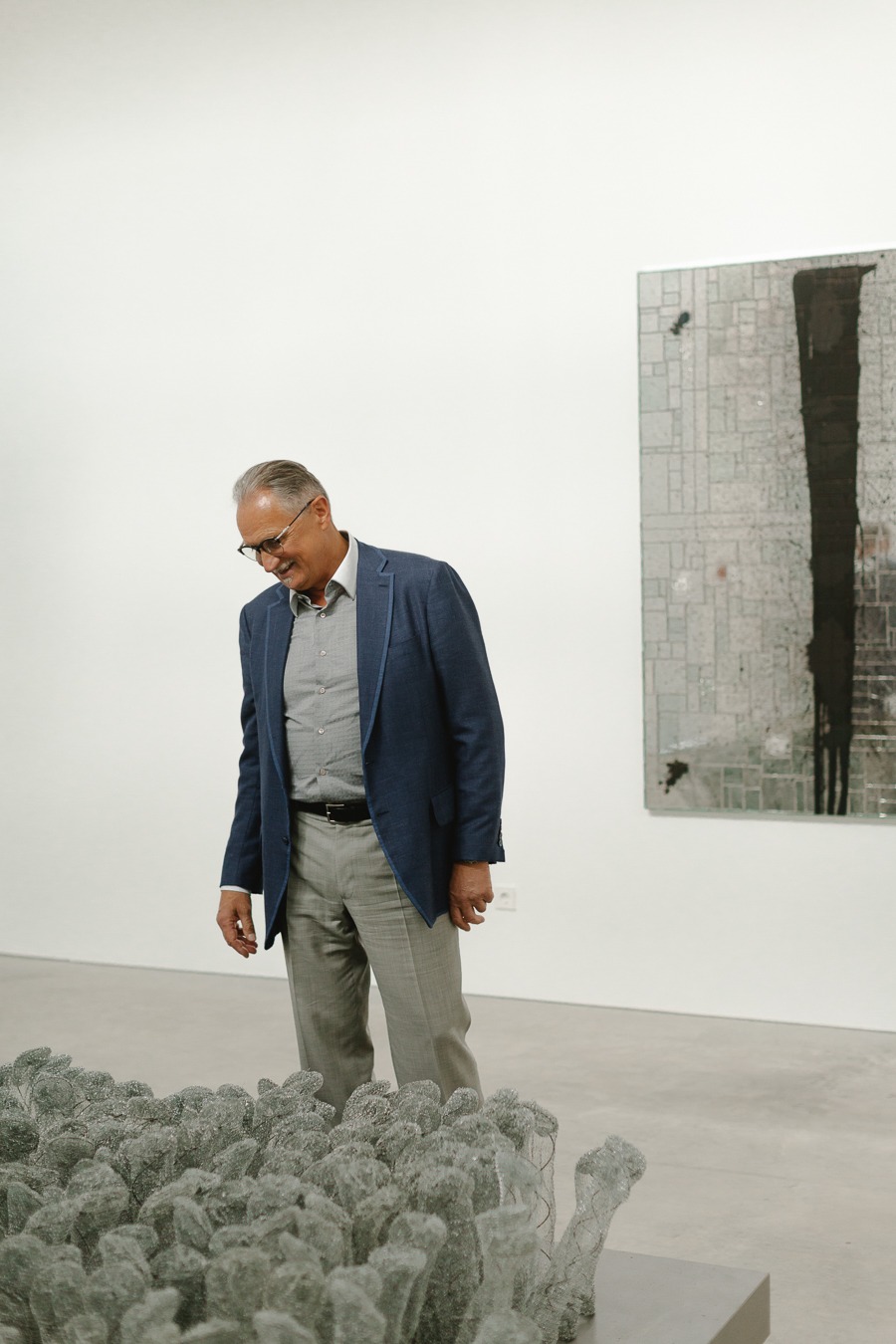
You said in an interview with Arterritory.com some time ago that your goal is to document the Latvian art scene. Now a foreign section has been added. Why is that? Has anything changed in your mission?
The one and only reason for adding a foreign section is to popularise Latvian art in the international environment; as I said at the beginning of this conversation, I am now using a different ‘alphabet’. We started with Russian art created between the 1960s and the present day, with an emphasis on works from the 1960s and 1990s (we have a very good collection of Russian nonconformism and so-called Moscow conceptualism, and Leningrad neo-romanticism). We originally wanted to exhibit it at the opening of the centre. We had even come up with a name – American Dream. The exhibition was planned as a mix of Russian and Latvian art of the time, as a reference to ‘the American dream’. We will implement this project at some time in the future, albeit in a different way than originally intended.
After 2010, when we started regularly going to art fairs, we would have conversations with other people who collect and are interested in art, and we realized that they knew practically nothing about the artist names that we were mentioning. Now that I tell them that our collection includes works by Thomas Houseago, Antony Gormley, and Daniel Richter, they react immediately. People's interest piques when they hear something familiar. They must be given the opportunity to see something new, i.e. by looking at artists that they already know, they will also notice the Latvian artists next to them.
Photo: Norbert Tukaj
You've put your foot in the door, one could say.
Rather, I think I've cast the net. Now I just have to start hauling it in. Two sculptures have been exhibited in the public space near the Zuzeum: one by Thomas Houseago in the courtyard, and the other, by Anthony Gormley, is by the centre’s outer wall. We deliberately chose this tactic so that people who come to Riga and are interested in art can notice these works. And then they also get to know some Latvian art. The bar must be raised a little higher. Otherwise there’s this feeling that everyone is content with staying within their own little group and that everything is cool. But let's try to jump higher! Let's put some effort into it.
But what are you looking for in art? You said you have works that you have no interest in talking to anymore.
I live in art. I’m like Joseph Beuys in that sense – everything is art and everyone is an artist. But when it comes to artists...there are artists to whom, over time, you realize that you've said everything there is to say; it's no longer interesting. As with humans. If we met every day for a two-hour conversation, we might end up not have anything to talk about after a while.
I live in art.
But did you buy the Gormley sculpture to talk to, or as bait?
I really like Gormley as an artist because he feels like ‘one of us’. His solo exhibition at the Royal Academy in London was one of the last exhibitions that we saw before Covid – there were these ‘Gormley people’ standing perpendicular to the walls, hanging from the ceiling... A wonderful exhibition! I really like the way he works with people, with their bodies. Maybe I'm a little superficial, and I’m no expert on philosophical and existential theories, but I understand that everything can be found within people.
I often sit with Marta Skulme's portrait [Latvian painter Otto Skulme's (1889 – 1967) Composition of a Portrait – Ed.], and I see a lot in it – the whole Skulme family can be found there, including the current troubles they are facing. I have rediscovered Edgars Iltners recently. I don't know why... There are artists whose works I used to buy almost greedily, but now I have begun to let go of their works; I’m selling them. The collector is like a bug in that he must get what he covets, but after a while, you realize that they lack the depth that you’re looking for – they were just commercialised pieces.
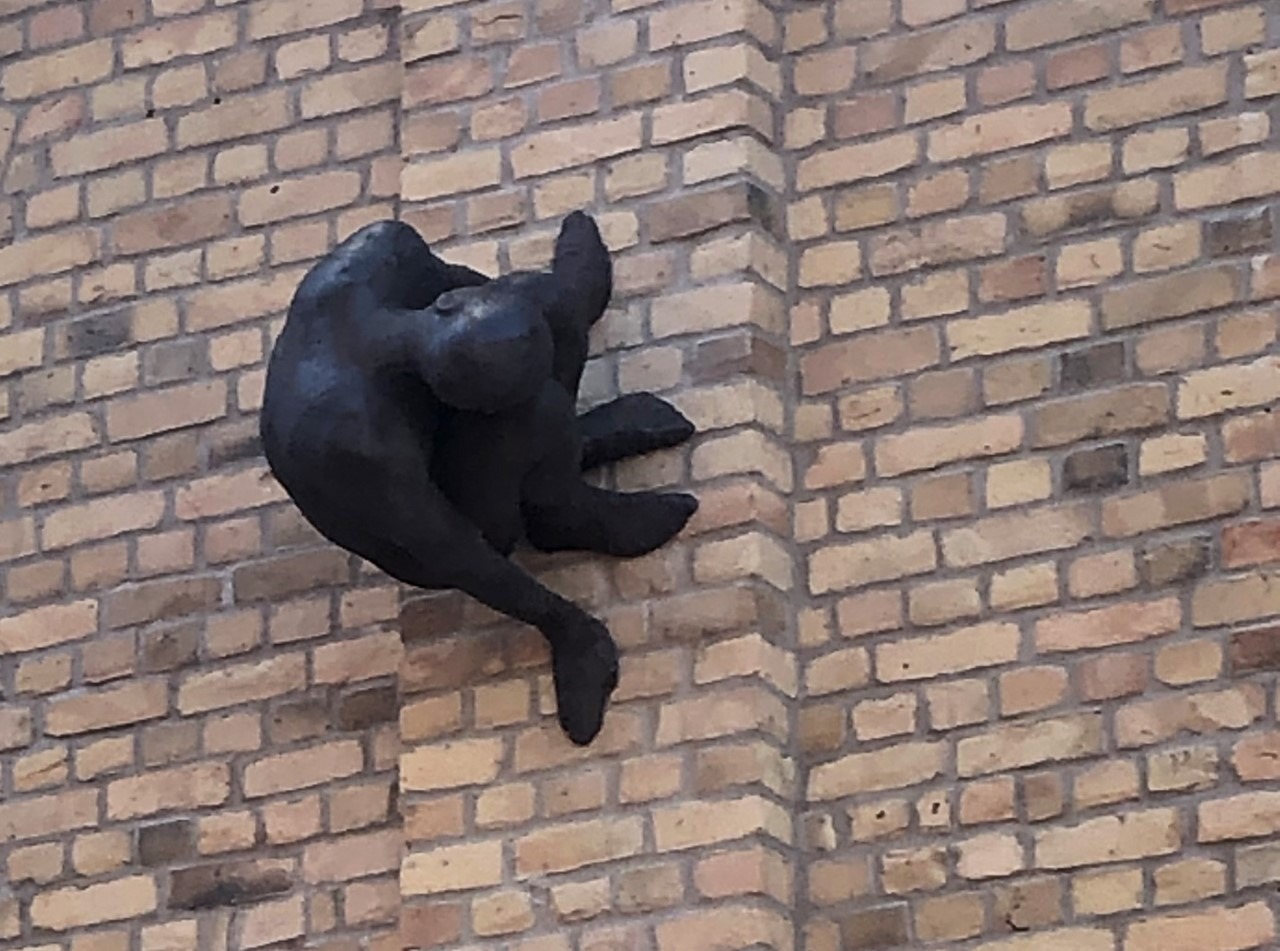
So you’re clearing away the top layer now. Don't you think that the collection should remain a whole?
I have a list of the most brilliant works. They are the important ones – 500, maybe 700 units. Everything else is just extra.
To what extent is the Zuzeum a dream come true?
It is definitely the coming true of Dina’s and my dream, but, of course, it is also the team's dream project. You can tell someone to do something, but if there’s no inspiration from within, nothing will happen. Naturally, the idea of the first show (American Dream) came from me, but its transformation into the current one was a team idea. I believe that the team needs to be on the same wavelength. I do have a lot of discussions with Dina – I am more focused on contemporary art, whereas she really likes classical painting, e.g. Purvītis, Rozentāls. We will definitely have a Purvītis anniversary exhibition; we are already working on it. But I have become addicted to contemporary art. Initially, I was also more fond of the classics. At home, we basically have works of classical modernism on display that are still very close to me. In general, I perceive many artists as ‘one of us’ – the wall in the office is really quite eclectic. Classic modernism, Līvija Endzelīna's Maija (the girl with a blue kerchief), which I like to call our ‘Gioconda’ – I often look at her; then there’s a work by Padegs and an icon; a Latvian 17th-century silver bowl and a work by Auseklis Baušķenieks; Ludolfs Liberts, Boriss Bērziņš and Jānis Liepiņš. And Miervaldis Polis and Bruno Vasiļevskis. A motley group, and I feel good when I’m with them. As with friends.
And there’s a Kiefer around the corner.
Yes, it's right there – in the library – and I like it too. And in the living room there are paintings by Jānis Pauļuks, Uga Skulme, and Miervaldis Polis.
You didn’t take anything from the office for the Zuzeum?
No. However, we did take Dace Lielā's painting from our home and also a work by Cindy Sherman; we also took the Jeff Koons sculpture to the Zuzeum – a total of three works. Not everything can be displayed at home. You can’t very well exhibit a large-format work by Indriķis Ģelzis at home.
You could in the garden.
But the garden is already full.
Are you proud of your Koons sculpture?
Good question. In fact – no, but at least I have something of his. I can put a check-mark by his name. I would like to buy a Koons painting, and I know exactly which one. I saw it at Frieze last year, but it cost five million. I don’t have that kind of money. But if I did, I’d buy it.
I don't have anything by Hirst because he doesn’t interest me. I might even be able to afford it, but I don't like it. And that which I do like is not accessible.
In Koons there is an era, the current day, and craftsmanship worked to perfection.
Photo: Norbert Tukaj
When speaking about the depth of art, can you find it in Koons' art?
In Koons there is an era, the current day, and craftsmanship worked to perfection. And that perfect sculpture is wonderful [Seated Ballerina – Ed.]! Naturally, it’s not high art, but it is beautiful in itself. If we talk about beauty as such... When you take a 17th/18th-century Meissen porcelain figurine in your hands, you understand that it is beautiful in a general sense. In art, I have always been attracted to beauty and beautiful things. Not just because I would like to acquire them. No. I simply like them. This game machine [indicates an antique slot machine] is beautiful! And in Koons there is this perfect beauty. There is little of art there – Koons bought the right to replicate the sculptures of the Ukrainian sculptor Oksana Zhnikrup, and his flashiest ballerina project took place in 2017, when the large-format Sitting Ballerina object was exhibited at Rockefeller Center.
In art, I have always been attracted to beauty and beautiful things. Not just because I would like to acquire them. No. I simply like them.
Would you like to meet Koons and talk to him?
Yes, it would be interesting to meet him. I would like to ask what motivated him to turn basketballs and vacuum cleaners into works of art. Even though this is often discussed in articles on Koons' work, I would like to ask him this directly.
Jānis Zuzāns. Photo: Vika Anisko